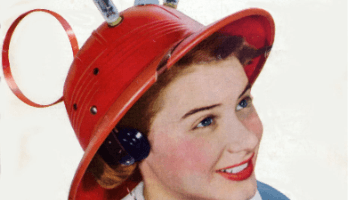8 dollar Radio Hat reveals origins of iPod
on

“The Radio Hat is made in such gay colors as canary tallow, lipstick red, turquoise chartreuse, tangerine, lavender blue and cerise for teen-agers and in tan, gray, green-gray, and blue-gray for adults. Communication, reception of news, time and weather reports are a constant necessity to people in this country [
20 hours battery life! An ultra-audion (huh?)! Just 8 bucks! The above words from the American Merri-Lei Corporation of
In documents now in the WikiMedia Commons domain, the Radio Hat is described in such detail that replication of the electronics in combination with a hard hat should not be too much of a problem even in 2011 and the people at Apple really should have a look at it although not everything will be comprehensible or suitable to communicate to shareholders.
By contrast, this is a gem to Elektor Weekly readers. All the components used in the Radio Hat, including the 1S5 (DAF91) and 3A4 (DL93) tubes are still around and easily sourced. What’s more, as opposed to semiconductors, these tubes are unaffected by high radiation levels, flaky updates, viruses and software bugs, which has considerable advantages these days. It will be hard though to beat the elegancy of the original Radio Hat worn by model Hope Lang for the cover of Radio Electronics’ June 1949 edition.


Discussion (0 comments)